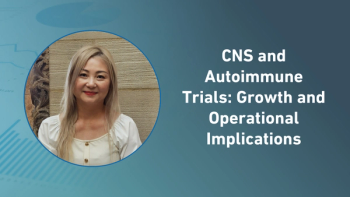
Moving Towards Decentralized Elements: Q&A with Scott Palmese, Worldwide Clinical Trials
Palmese, executive director, site relationships and DCT solutions, discusses the practice of incorporating decentralized elements in a study rather than planning a decentralized trial from the start.
While decentralized clinical trials (DCTs) have become more popular in recent years, some misconceptions around the study model still exist. Rather than a tool, some stakeholders view DCTs as a standalone offering, which can create confusion in the early phases of study design. Applied Clinical Trials recently spoke with Scott Palmese, executive director, site relationships and DCT solutions, Worldwide Clinical Trials, about this perspective as well as other trends occurring around DCTs.
ACT: How do you picture decentralized clinical trials (DCTs) continuing to evolve in 2025 and beyond?
Palmese: As we look toward 2025, I believe a fundamental transformation must occur in the clinical research community’s perspective on DCTs.
Ten years ago, the industry was convinced that DCTs were the future of every study. That hasn’t panned out; I don’t imagine it ever will. We’ve learned over time that a “one-size-fits-all” approach just isn’t realistic for all the different populations we serve. So, going forward, we have a tremendous opportunity to evolve our thinking.
It’s time to move beyond viewing DCTs as a discrete service offering. Rather than contemplating whether to conduct a “decentralized trial,” we should consider how “decentralized elements” could minimize burdens on patients and sites. This is more than a semantic shift; it recognizes that DCTs are simply a different type of tool in the toolbox. They are tools that can—and should—be used in conjunction with other patient- and site-friendly tools.
ACT: What misconceptions about DCTs do you commonly encounter?
Palmese: It’s hard to paint a broad picture, but one misconception I often encounter is that DCT elements are essentially a budget line item. While sponsors acknowledge the DCT concept has merit, they wonder whether it represents much beyond an expensive, nice-to-have add-on. They worry that DCT elements could balloon a study’s cost without being integral to its operations.
Although most studies can indeed be conducted without DCT elements, I urge sponsors to think carefully about their strategic advantage to patient recruitment and retention. DCT options could be especially helpful for patients living in distant geographies, or dealing with limitations caused by their medical conditions. In today's world, where remote options have become a way of life, DCT elements may be critical in finding, keeping, and engaging the right patient populations. Therefore, the strategic impact of DCT elements must be weighed alongside the budget implications.
ACT: What is the most significant value DCTs bring to clinical research? In other words, why is it important to continue pursuing DCTs?
Palmese: The ultimate value of DCT elements lies in their ability to expand patient access and inclusivity while easing site burdens. They help sponsors access patients and, in turn, give patients easier access to more clinical trials. This is especially important for reaching underserved populations and increasing the diversity of clinical trial populations.
If we leverage DCT elements appropriately, I believe we’ll find that they foster greater inclusivity, ease patient recruitment and retention, and enhance site relationships.
ACT: How can the clinical research community optimize DCTs’ benefits?
Palmese: The key to optimization is to engage stakeholders early in trial design. Patients and sites should be consulted about potential DCT elements because what looks good on paper may not work well in reality.
For example, a colleague working on a pediatric rare disease study recently considered using a video monitoring device to collect data while patients slept. Although the solution seemed ideal, discussions with caregivers revealed it would have upset them. Their children’s disease was so severe that they seldom had the luxury of their own space to sleep. So, the monitoring device seemed like an even further invasion of their children’s privacy.
As my colleague’s story attests, we should diligently examine each study’s patient populations and talk with them about DCT elements. We should speak with sites about their systems, workflows, and how DCT technologies might integrate. We should bring all the stakeholders together and think critically about how to operationalize the requirements through appropriate site and patient solutions. For each protocol-mandated visit, we should ask: What is the patient burden? What is the site burden? How can we minimize these burdens?
The bottom line is that DCT elements can be powerful tools for addressing patient and site burdens. However, they will significantly enhance patient engagement, site relationships, and study outcomes only when they are fit for purpose and aligned with each population’s unique needs.
ACT: How should sponsor companies and drug development professionals evaluate potential DCT partners?
Palmese: That’s a difficult question for me to answer. The industry is full of organizations claiming, “We’re DCT experts!” But what does that even mean? It’s a nebulous claim.
Therefore, I’d prefer drug development stakeholders to think of DCT not as an “offering” at all but instead as another tool at their disposal. In that light, they should take time to engage patients and sites early in protocol development and actively understand which DCT elements they would welcome—or not. Invariably, the goal should be to collaboratively evaluate all available solutions and choose only the ones that best meet the unique needs of each study’s patients and sites.
Newsletter
Stay current in clinical research with Applied Clinical Trials, providing expert insights, regulatory updates, and practical strategies for successful clinical trial design and execution.






.png)



.png)



.png)
.png)
